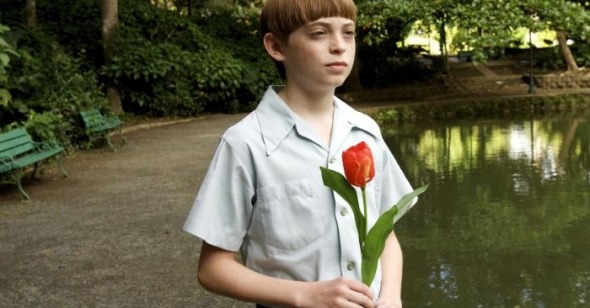Reverse Shot’s 11 Offenses of 2010
Now’s the time of year when we piss people off. And trust us, though our annual 11 Offenses column (oh, how we could go higher than 11…) incites the angriest mail and message board postings we get, we do not do this for attention (completely). We genuinely hated sitting through these movies. When they receive nothing but accolades, it only makes our ire grow stronger. Though some claim these articles are oppositional, even opportunistic, we prefer to think of them as vital correctives. Our picks have stood the test of time thus far: looking back at past 11 Offenses columns, we must say we have no regrets (anyone who still thinks Slumdog Millionaire is a good movie simply cannot be your friend; Juno continues to annoy the living hell out of us; no, Southland Tales was not a misunderstood masterpiece, sorry fellow cinephiles; the memory of watching The Lovely Bones still gives us the skeezies; does anyone even remember Babel?). Which of this year’s releases are most likely to end up in the trash bins of cinematic history? Read on!
[Capsules by Julien Allen, Matt Connolly, Eric Hynes, Michael Koresky, Benjamin Mercer, Adam Nayman, Jeff Reichert, Michael Joshua Rowin, Elbert Ventura, Chris Wisniewski, and Genevieve Yue.]
Life During Wartime
A mini-trend of the past decade: indie directors from the halcyon 1990s sealing their legacies with belated sequels to their best or most well-known films. While previously Richard Linklater reconfirmed his neurotic melancholy (a good thing) in Before Sunset, and Kevin Smith removed all doubt as to his obnoxiousness in Clerks II, in 2010 brief art-house darling Todd Solondz produced the follow-up to moldy 1998 succès de scandale Happiness that nobody wanted, Life During Wartime. With his latest wallow in human misery, Solondz sets out to prove he's no longer just a bad boy but a pop philosopher for The Times in Which We Live—as if the pretentious, zeitgeist-humping title weren’t enough, Solondz forces a maximum number of 9/11 references and bullet-pointed big issues (Forgiveness, etc.) into his characters’ sulkily monotone dialogues in order to prove he’s got his satiric crosshairs trained on the Now. And what does he so irreverently and bitterly skewer with the comedic chops he’s arduously developed over the course of his ever-maturing oeuvre? Arrogant Hollywood screenwriters! (Aren’t they so superficial and vain?) Materialistic suburban housewives! (Little known to the outside world as shallow, selfish, and oblivious to the real concerns of their pampered but neglected children.) Airy, hippie-ish pushovers! (Just pitiful, pitiful, pitiful people.) Forget the few moments of actual intelligence that instantly get squandered in Life During Wartime, and especially disregard the gimmicky use of an entire new cast to portray the “lovable” and, in some circles, beloved, roster from Happiness: the more Solondz insists on experimentation and topicality the more he flagrantly displays the ugly, caricatured, and almost inconceivably simplistic view of the world he wishes to project on everyone else. —MJR

Catfish
[Spoilers . . . but who cares?] The documentary Catfish, which follows freelance photographer Nev Schulman as he finds out his renaissance-family correspondents from Michigan are not who they say they are, might most charitably be described as a distasteful scared-straight chat-room safety lecture delivered to an eighth-grade assembly in 1996. (So much for the movie’s claim to be fundamentally of the moment, laid as it is in Google Maps–knockoff scene transitions.) Nev appears to be congenitally disingenuous, but just how much, if any, of Catfish is a hoax is between its co-directors, Henry Joost and Ariel Schulman (Nev’s brother), and God. What’s truly unsavory here is the filmmakers’ belief that the entrapment of a likely mentally ill woman—presumably meant to demonstrate how messed up the Internet is, as well as show how enlightened the camera-wielding New Yorkers are, because they’re allowing her a soapbox from which to atone—tells us about anything other than their own questionable judgment. And that’s to say nothing of the investigative methods of Joost and the Schulmans: Googling people’s names doesn’t appear to be in their “something’s fishy” skill set, but at one point they enjoy a good old-fashioned vigilante shuffling through someone else’s mail. —BM
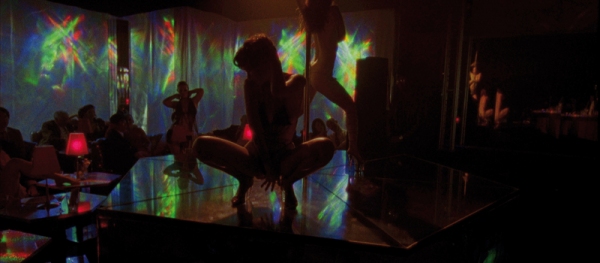
Enter the Void
Gaspar Noé wants to punish you. This year, the controversial provocateur behind the backwards revenge-rape melodrama Irreversible upped the ante and, for this viewer at least, lost his credibility with the death-trip fantasy horror Enter the Void, a tedious exercise in rigorous subjective camerawork peppered with some half-baked (in multiple senses) musings on What Happens to Us After Death. Here, as in Irreversible, Noé takes an unconventional storytelling approach that’s less original than it might at first seem (see The Diving Bell and the Butterfly and Memento, respectively, for movies that beat Enter the Void and Irreversible to their dramaturgical punches), while subjecting his audience to all kinds of unpleasantness: a brutal car accident replayed ad nauseam; a penis thrusting and climaxing right at the camera, from the vagina’s point-of-view; a close-up of an aborted fetus lying in a circular (get it? circular?) dish—Enter the Void has it all (eat your heart out Lars von Trier). If only it had a point beyond a few tired clichés (Death is a trip; Every end is a beginning; etc.). When drug dealer-cum-junkie Oscar (Nathaniel Brown, seen mostly, if ever, from behind) meets his untimely demise in the bathroom of a Tokyo bar, he begins a post-death journey that takes him back into the past and forward into the future, by way of a strip club (of course) and a “Love Hotel” (where all the film’s “characters” reunite for endless bouts of narratively unmotivated hanky-panky), and ending—apparently—in reincarnation. By the time Oscar finally experiences the miracle of (re)birth, though, it’s hard to care—if that was ever possible in the first place. After well over two hours of whirly, twirly camera movements, bare breasts, and sickening smash cuts, Enter the Void stops provoking either thought or indignation and instead becomes, well, a deadly bore. —CW
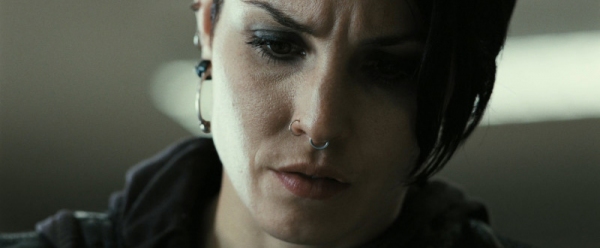
The Girl with the Dragon Tattoo
The appeal of Lisbeth Salander—the hacker-cum-punkette at the center of the late Stieg Larsson’s “Millennium Trilogy” novels and their subsequent Swedish film adaptations—makes sense, in a problematic sort of way. The victim of almost ceaseless physical and sexual abuse throughout her childhood, Lisbeth grows up to not only use her formidable computer skills to take down “the Man,” but also gets to seek vengeance on many of the men who tormented her. How this vigilante revenge fantasy, complete with a dollop of techno-era intrigue and a generous squirt of pseudofeminist outrage, plays out either on the page or in the second and third chapters of the filmed trilogy (both directed by Daniel Alfredson) is admittedly unknown to me. After suffering through Niels Arden Oplev’s turgid adaptation of The Girl with the Dragon Tattoo, however, I can only conclude that Lisbeth (played in the films by Noomi Rapace) has gotten screwed over by yet another pack of leering dudes. Eye-rolling offenses abound in the film’s treatment of Lisbeth’s damaged psyche and sexuality, not least of all the decision to signify her steadying emotional equilibrium by swapping out an early-film female lover for weathered male journalist and fellow mystery-solver Mikael (Michael Nyqvist). (Lesbians…so unstable!) But the spoiled cherries atop this rancid sundae come in the form of the film’s two (!) anal rape scenes—the first a queasily prolonged assault on Lisbeth by her sadistic probation officer; the second an equally sordid tableau in which Lisbeth makes the officer watch his earlier attack on video while she sodomizes him with a hefty dildo. Oplev and company seem to think such juxtapositions show the depths of Lisbeth’s pain-fueled rage, but it really highlights the film’s boneheaded “have-your-rape-and-avenge-it-too” mentality—an attitude by turns insulting, odious, and deeply stupid. We’ll be visited by Lisbeth yet again next year, in David Fincher’s Hollywood remake of The Girl with the Dragon Tattoo. Fincher is no one’s idea of a sensitive chronicler of the female experience, but he’ll have to pull more than a couple severed Gwyneth Paltrow heads out of his hat to out-ick this junk. —MC
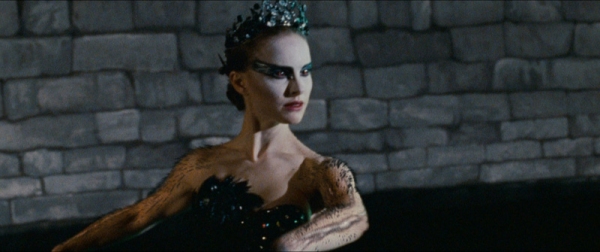
Black Swan
Fresh off gulling critics and audiences with The Wrestler, an art-house hit with all the subtlety of a pile-driver, Darren Aronofsky returns for an encore—and fools them yet again. As of this writing, Black Swan rests at number four on indieWIRE’s year-end critics’ poll, an apt summa for a year in which the overrated and the underwhelming ruled. If you’ve ever watched Roman Polanski’s Repulsion and thought, “You know what this needs? More exposition!” Black Swan is for you. At times gob-smackingly stupid, Aronofsky’s film is too convinced of its power to be mistaken for a fun folly. (Compare with another Polanksi paranoid thriller, The Ghost Writer, which was everything Black Swan isn’t: unpretentious, effortless, enjoyable.) There are virtuoso moments to be sure—the book-ended ballet numbers, for two—but by the twentieth shock cut accompanied by booming musical cue, it’s clear that Aronofsky is willing to try anything to get our attention. (That’s not just Natalie Portman’s labored breathing you hear on the soundtrack—it’s her director’s, too.) Relentless and pandering, Aronofsky piles effect upon effect; many critics, it seems, felt the pummeling and mistook it for genuine feeling. Black Swan shares with The Wrestler the calculation of a careerist. It affirms Aronofsky’s place as our new indie emperor, armed with a catalog of moves masquerading as a vision. “She’s not faking it,” Vincent Cassel’s impresario says of a ballerina in the company. Well, someone is. —EV
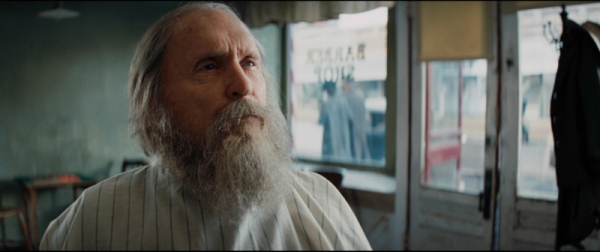
Get Low
Was Aaron Schneider’s somnambulistic Get Low just the year’s biggest guitar-twanged snooze or was it something worse—2010’s most egregious stab at artistic credibility by aping regional authenticity? In telling this tale (excuse me, “tall tale,” as it was misleadingly marketed) of a grizzled, East Tennessee hermit who shocks his easily shockable small town in the 1930s by announcing and mounting his own living funeral, Schneider evidently wanted to make viewers feel the backwoods autumn chill, smell the tall pines and wood-burning stoves, admire the hand-scrawled “No Tresspassin’!” signs, and bask in an inoffensive bit of poverty nostalgia. Yet with its population of big-name stars, each giving a performance more disinterested and self-parodic than the next (Robert Duvall creaks a few Duvall-ish mannerisms as bearded mountain man Felix Bush; Sissy Spacek beams with Spacek-like benevolence as the aged former flame who might help unlock the highly uninteresting secret of Bush’s rumored past; and as an undertaker with dollar signs for eyes, a barely roused Bill Murray does his post–Wes Anderson Bill Murray thing, in which he seems to have utter contempt for everything around him, especially the filmmakers), Get Low becomes nothing more than a false pageant of homespun, homiletic folklore. The basic plot thrust is tired (perhaps the townsfolk never read Tom Sawyer, but surely many in the audience have), the revelations of the hermit’s dark past are beyond anticlimactic (turns out Felix is just an irascible, misunderstood hero, after all—in case there was any doubt), and the whole thing leads to an Oscar-ready final monologue by Felix in front of the whole town, in which the neophyte director seems to have just got out of Duvall’s way (watch the unleashed actor’s halting tics and silly, Bela Lugosi–esque hand gestures, and try not to giggle—if you’re awake at that point). It’s the kind of movie to which critics give a free pass, as it “dares” to be tiny and “unassuming.” But everything that happens in the film is so calculated, narrow, and audience-mollifying (when I saw it, viewers sighed with appreciative laughter at Duvall’s every spat-out line) that one might as well be watching Transformers 2: Rise of the Machines. —MK

The Secret in Their Eyes
It’s depressing that at a time when Latin American filmmaking is leading the charge, the Academy Awards selected Juan José Campanella’s The Secret in Their Eyes for honoring, a film that loudly demands credibility without ever earning it. For when you strip away the patina of oily, low-lit color and flaccid male existentialism, this decades-spanning procedural of a young girl’s murder is no more elevating or thought-provoking an examination of truth and justice than (world’s worst director) Alan Parker’s vomitous The Life of David Gale. Tip: If you’re going to paint Oscar-prodding themes by numbers onto a basic thriller template, make sure the thriller works on its own terms first, because the “profound” stuff isn't going to come to its rescue. Given that The Secret in Their Eyes starts from the flimsiest of whodunit concepts and then invites us to swallow major plot developments based on uninspired—and haphazardly dramatized—hunches (and one preposterous penis-based confession), it doesn’t take long for the whole thing to become a bit insulting. Having the lofty aim of investigating historically specific Argentinean political corruption doesn’t really excuse wholesale disregard for the basic principles of storytelling. Stylistically, things aren’t much more coherent: the ostentatious CG football stadium centerpiece in which a distant helicopter shot morphs seamlessly into a single-take foot chase, culminating on the field of play, absolutely reeks of effort, like shoving a whole truffle into an otherwise tasteless broth. Furthermore, headaches are induced by the self-important litany of stubborn close-ups (Welles’s “primary evil” of filmmaking), mainly of people’s eyes: we get it, okay, the “secret” is in their eyes! At least in one respect the film is completely effortless—in its fanfaronade of misogyny. Even if we choose to tolerate the queasy inevitability of female victimization and open celebration of protagonist Benjamin’s evolution into an alpha-male, when we finally learn at the end that his marriage (to an unnamed, unmentioned, unrepresented wife) “just didn't work out,” we immediately sympathize with her. In their eyes or in ours, this sort of filmmaking holds no secrets at all. —JA
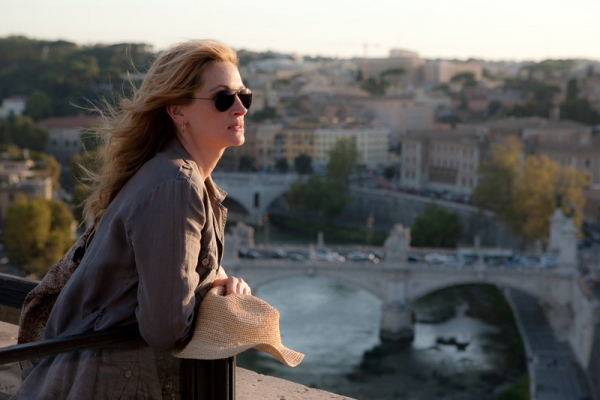
Eat Pray Love
Eat Pray Love starts with a voiceover by its inescapable heroine, Elizabeth Gilbert (Julia Roberts), who, over the soft plunkings of a gamelan, describes how a group of Cambodian refugees, instead of discussing with a therapist the traumas of war and genocide they’d endured, wanted to talk about the universal topic of relationships. You can hear the shrug in Roberts’s voice when she concludes, “This is how we are.” Fair enough, but the film appears to take the idea of “we” as an excuse to focus on “me” (or “me me me!” as she exclaims at one point), glossing over some fairly significant differences that exist between successful Manhattanite women and, well, pretty much everyone else. And how glossy it is: from the dusty alcoves of a Roman temple to a misty palm forest in Bali, the movie resembles an extended tourism commercial designed to feed our wanderlust, or at least our appetite for pasta, by appealing to the little soul-searching, third-wave feminist Gilbert within us all. Yet beyond a brief mention of the bombings on Bali, a Slumdog Millionaire–style taxi jaunt through the slums of Calcutta, and the quick fundraising Gilbert does to build a house for her impoverished Indonesian single mom gal pal, the world she traipses through is little more than a lushly painted backdrop on a Hollywood soundstage. For all its shellacked earnestness and wrinkled-brow introspection (and I hear Gilbert’s memoir succeeds at least in this regard), Eat Pray Love is remarkably good at leaving Gilbert’s life, and the lives around her, unexamined. One of the most infuriating images in the film, and there are many—let’s not even start with the sassy black sidekick or the toothless healer that Gilbert compares to Yoda—is an epilogistic shot of Gilbert’s ex sporting a new wife and a BabyBjörn. See, in a mind as deeply narcissistic as Gilbert’s, everything turns out for the best, even if she never fully owns up to the damage she caused when she inexplicably divorced her husband. For all the traveling done in the film, the only person Gilbert really encounters is herself, and the reflection she sees is angled to flatter. Though sometimes encumbered by a bladder infection or the need to buy slightly bigger jeans, her journey returns, always, the image of a beatific Roberts perfecting her lotus pose or strolling barefoot in gauzy resortwear. —GY
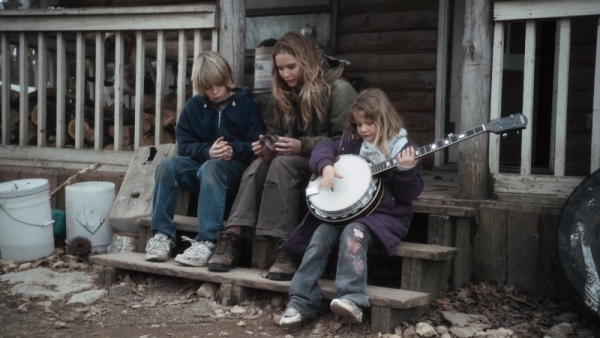
Winter’s Bone
Winter’s Bone has one of 2010’s best performances, by Jennifer Lawrence, but the albatross around her neck that is the rest of the film threatens to drag her down into Ozark-ian muck. Though director Debra Granik has professed in interviews to be fully aware of the potential ethnographic pitfalls of a New York indie film crew descending with cameras upon a highly depressed section of rural America, like so many contemporary stabs at regional Amerindie her movie mistakes accuracy with authenticity. Replete with artfully composed images of dirty run-down shacks, muddy pickups, and skeleton trees navigated by a host of hirsute denim-clad folks evincing varying stages of dental decay, Winter’s Bone is clearly a thoroughly researched, scrupulously designed, if wholly undistinguished piece of filmmaking, but its wrongheadedness is obvious almost from frame one. By using a second rate gothic thriller as the vehicle for her backwoods Ozarks tour she recasts the entire region in the grim gray light of misguided fantasy, and it doesn’t let her off the hook that she hired some locals as extras and rented their houses for sets. For all any of us city-dwelling critics (unsurprisingly susceptible to images of the hardscrabble America we’re largely insulated from) know, each day in local police stations across the region is a parade of teenage girls clutching paper bags with daddy’s lopped-off hands in them so they can save mammy and the house—but bludgeoning the tough ongoing existences of real people into three neat acts only makes it easier for audiences to shake their heads in thoughtful sadness at what happens “over there” before heading to dinner. That this wound up on any list of the year’s best films—much less many of them—has some of us completely baffled. Though well-meaning in many ways, there’s condescension in it, and lots of it, all-capped by an intentionally profound, wordless ending that gives us a moment to breathe and recognize that what we just witnessed was art. —JR
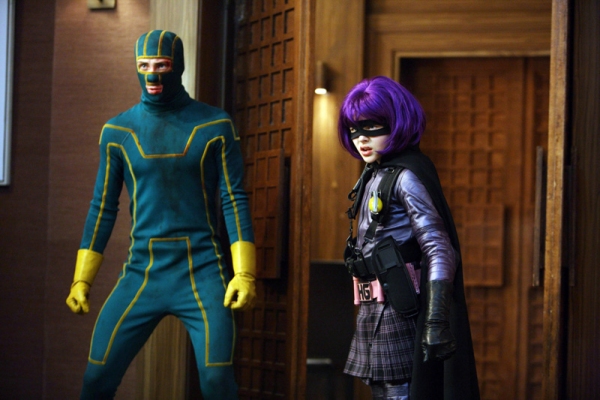
Kick-Ass
Really, Kick-Ass is no worse than James Gunn’s stuporous Super, but since the latter won’t open commercially until next year, Matthew Vaughn’s clumsy stab at superhero self-reflexivity gets sent to the corner on its own. The dunce cap, though, sits on the heads of those reviewers who praised the film—adapted from Mark Millar and John Romita Jr.’s comic book about an aspiring teenage crime-fighter who falls in with a Batman-esque sociopath and his prepubescent murderess daughter—for its formal chops and thematic daring. To address the first issue, Kick-Ass quotes liberally from Takashi, Takeshi, and Tarantino but never formulates a consistent, coherent aesthetic. When the camera isn’t whipping around in CGI-assisted frenzy, it’s cutting dully between talking heads. As for the spectacle of Chloe Moretz’s fetishized 11-year-old offing bad guys with dead-eyed aplomb, it feels less like envelope-pushing than audience-goosing, mere pandering prelude to a parade of sentimental clichés: find here heroes hardened by childhood traumas, torches passed from flawed fathers, etc. Kick Ass’s champions will surely cite these as “archetypes” (and argue that they’ve been “deconstructed,” besides), but in my experience, if it walks like a duck and quacks like a duck, it’s a duck. And what we have on our hands here is one lame fucking duck. —AN
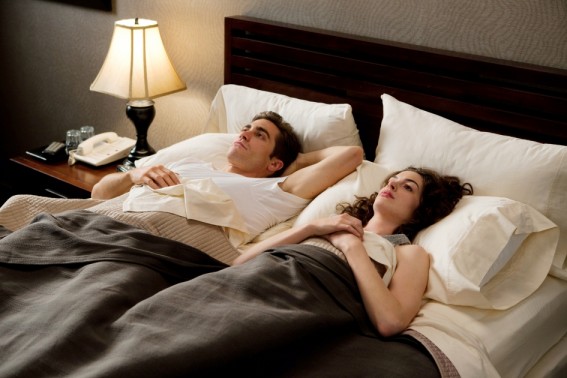
Going the Distance and Love and Other Drugs
For proof of the utter bankruptcy of the romantic comedy genre circa 2010, look no further than two movies crassly kindred in their shambling, atonal, cloying ineptitude. Both were afforded generously middling reviews based solely on the appeal and attractiveness of their young stars—which is like giving Howard the Duck a pass because Lea Thompson looked fetching in panties. If your hopes for the Hollywood rom-com still rest on Drew Barrymore’s slanted grin, or on Anne Hathaway’s big, bright, Disney-drawn features, maybe demand better than leftovers from, respectively, Cameron Diaz (There’s Something About Mary) and Meg Ryan (When a Man Loves a Woman, legendarily). And my, how these high-larious, group-thunk movies harmonize. Going the Distance has a hard-on for 1980s pop culture—Barrymore and Justin Long bond over Top Gun and Centipede—while Love and Other Drugs revels in 90s trash, from the Macarena to Viagra. Two trailer-worthy scenes from the films match up perfectly: the first sees fresh-from-the-plane long-distance love Long jumping Barrymore on the kitchen table, only to realize that dumpy brother-in-law Jim Gaffigan is munching at the same table, fixed on Long’s bare ass. Cut to Hathaway entering Jake Gyllenhaal’s apartment dressed in a trench coat that she quickly discards, only to realize that dumpy brother Josh Gad is eating popcorn on the couch, fixed on Hathaway’s fresh produce. And on the level of narrative, both films follow a seemingly ubiquitous, somehow “contemporary” attraction-repulsion-attraction arc, in which beautiful actors act really ugly (they’re profane, they’re shallow, they have spectacularly unfunny dude friends, they have parasitic sex) before revealing themselves as old-fashioned romantics. Forget about characters to aspire, or even to relate, to—these are pretty people actually worse than we are, yet secretly superior. Which says more than a little about where these films are coming from, and how they feel about you. —EH
